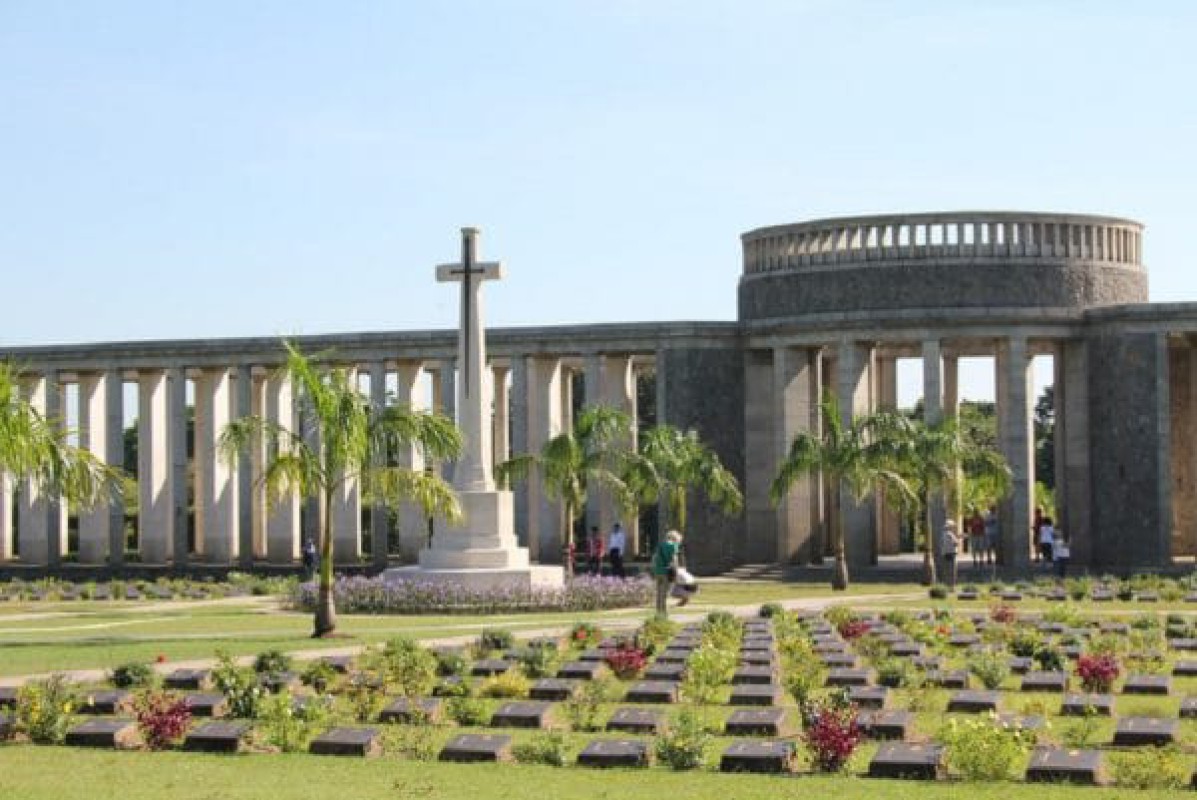A showcase of tribute to bravery, sacrifices in Yangon

833

By Hsu (NP News) - March 27
Nestled amidst the tranquil landscape of Myanmar's Yangon Region, the Taukkyan War Cemetery stands as a poignant reminder of the sacrifices made during World War II. This serene and meticulously maintained burial ground is not only a place of remembrance but also a testament to the shared history that connects Myanmar to the global community. More than just a burial ground, it's a historical tapestry woven with stories of bravery, loss, and enduring remembrance. For tourists seeking a deeper understanding of Myanmar's past and a moment of quiet reflection, Taukkyan offers an experience that transcends the typical travel itinerary.
A Legacy of Conflict
The cemetery's origins lie in the tumultuous years of the Second World War. Following the Japanese invasion of Burma in 1942, the region became a crucial battleground. The Allied forces, comprising British, Commonwealth, and other nationalities, fought a bitter campaign to reclaim the territory. The fierce fighting resulted in numerous casualties, and Taukkyan was established as a primary burial site for those who fell in the struggle. The campaign saw fierce fighting between Allied forces, primarily composed of British, Indian, African, and Burmese troops, and the Japanese Imperial Army. The battles were fought across dense jungles, rugged mountains, and malaria-infested valleys, with Myanmar (then Burma) serving as a strategic gateway to India and Southeast Asia.
The cemetery was established in 1951 by the Commonwealth War Graves Commission (CWGC) to honor the soldiers who lost their lives during the campaign. It is the largest of the three war cemeteries in Myanmar, housing the graves of over 6,000 soldiers from across the Commonwealth, as well as memorials for more than 27,000 men whose remains were never found. The names of these missing soldiers are inscribed on the Rangoon Memorial, a towering stone structure that dominates the cemetery’s landscape.
A Serene Resting Place
Located approximately 25 kilometers (15 miles) north of Yangon, Taukkyan War Cemetery is a sprawling expanse of meticulously manicured lawns and vibrant flower beds. The site's tranquil atmosphere provides a stark contrast to the violent events it commemorates. Rows upon rows of headstones, each bearing the name, rank, and regimental insignia of a fallen soldier, stand as silent sentinels.
The cemetery is divided into sections, reflecting the diverse nationalities of those buried there. The Stone of Remembrance, a central feature, bears the inscription "Their Name Liveth For Evermore," a powerful affirmation of the enduring legacy of those who rest here. The Cross of Sacrifice, another prominent monument, stands tall as a symbol of shared sacrifice.
Stories Etched in Stone
Among the thousands of individuals laid to rest at Taukkyan, several stories stand out, offering glimpses into the human cost of war. While the vast majority of burials are of Commonwealth soldiers, the cemetery also holds the remains of individuals from other nationalities, highlighting the international nature of the conflict.
Many graves belong to young
men, their lives cut short in the prime of youth. The inscriptions often reveal poignant details about their lives and backgrounds, adding a personal dimension to the collective narrative of loss. Visitors can find the graves of soldiers from diverse units, including the British Army, the Indian Army, the East African Forces, and the Royal Air Force.
While identifying specific "significant veterans" as individuals who were exceptionally famous in the public eye is difficult, the collective significance of every soldier buried there is paramount. Every headstone represents a life lost, a family grieving, and a contribution to the larger struggle against tyranny.
A Must-Visit for Thoughtful Traveler
For tourists seeking a deeper connection with Myanmar's history, Taukkyan War Cemetery offers a unique and moving experience. It provides a valuable insight into the country's role in World War II and the impact of the conflict on its people.
Visiting Taukkyan is not merely about sightseeing; it's about paying homage to those who gave their lives in the service of freedom. The serene atmosphere of the cemetery encourages reflection and contemplation, prompting visitors to consider the enduring consequences of war.
Furthermore, it is a testament to the international cooperation and reconciliation that followed the war. The CWGC's commitment to maintaining the cemetery ensures that the memory of those who died is honored regardless of their nationality or background.
Beyond the historical significance, the cemetery's tranquil setting offers a respite from the bustling city of Yangon. The meticulously maintained grounds and the peaceful ambiance create a sense of serenity, making it an ideal place for quiet contemplation.
By visiting Taukkyan War Cemetery, tourists can gain a more nuanced understanding of Myanmar's past, fostering a deeper appreciation for the country's resilience and its place in the global narrative of World War II. It is a place where history comes alive, where stories are whispered in the wind, and where the enduring power of remembrance is palpable. It is a vital and moving place to explore while in Myanmar.
References:
• Commonwealth War Graves Commission (CWGC). "Taukkyan War Cemetery."
• Historical Accounts of the Burma Campaign (World War II).
• Travel Guides and Resources on Myanmar.